UNITED STATES ONE DOLLAR BILL
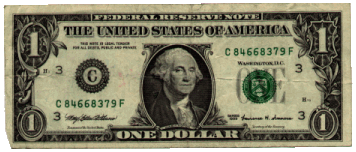
Take out a one dollar bill, and look at it. The one dollar bill
you're looking at first came off the presses in 1957 in its present design.
This so-called
paper money is in fact a cotton and linen blend, with red and blue minute silk fibers
running through it.
It is actually material. We've all washed it without it falling apart. A special blend of
ink is used, the contents we will never know. It is overprinted with symbols and then it
is starched to make it resistant and pressed to give it that nice crisp look.
If you look on the front of the bill, you will see the United States Treasury Seal. On the
top you will see the scales for a balanced budget. In the center, you have a carpenter's
square, a tool used for an even cut. Underneath is the Key to the United States Treasury.

That's all pretty easy to figure out, but what is on the back of
that dollar bill is something we should all know. If you turn the bill over, you will see
two circles. Both circles, together, comprise the Great Seal of the United States.
The First Continental Congress requested that Benjamin Franklin and a group of men come up
with a Seal. It took them four years to accomplish this task and another two years to get
it approved. If you look at the left-hand circle, you will see a Pyramid. Notice the face
is lighted, and the western side is dark.
This country was just beginning. We had not begun to explore the West or decided what we
could do for Western Civilization. The Pyramid is un-capped, again signifying that we were
not even close to being finished. Inside the capstone, you have the all-seeing eye, an
ancient symbol for divinity.
It was Franklin's belief that one man couldn't do it alone, but a group of men, with the
help of God, could do anything. IN GOD WE TRUST; is on this currency.The Latin above the
pyramid, ANNUIT COEPTIS, means, God has favored our undertaking. The Latin below the
pyramid, NOVUS ORDO SECLORUM, means, a new order has begun.
At the base of the pyramid is the Roman & gt Numeral for 1776. If you look at the
right-hand circle, and check it carefully, you will learn that it is on every National
Cemetery in the United States. It is also on the Parade of Flags Walkway at the Bushnell,
Florida National Cemetery, and is the centerpiece of most hero's monuments.
Slightly modified, it is the seal of the President of the United States, and it is always
visible whenever he speaks, yet very few people know what the symbols mean. The Bald Eagle
was elected as a symbol for victory for two reasons: First, he is not afraid of a storm;
he is strong, and he is smart enough to soar above it. Secondly, he wears no material
crown. We had just broken from the King of England.
Also, notice the shield is unsupported. This country can now stand on its own. At the top
of that shield, you have a white bar signifying congress, a unifying factor. We were
coming together as one nation. In the Eagle's beak, you will read E PLURIBUS UNUM,
meaning, one nation from many people.
Above the Eagle, you have 13 stars, representing the 13 original colonies, and any clouds
of misunderstanding rolling away. Again, we were coming together as one.
Notice what the Eagle holds in his talons. He holds an olive branch and arrows. This
country wants peace, but we will never be afraid to fight to preserve peace. The Eagle
always wants to face the olive branch, but in time of war, this gaze turns toward the
arrows.
They say that the number 13 is an unlucky number. This is almost a worldwide belief. You
will usually never
see a room numbered 13, or any hotels or motels with 13th floor. But think about this: 13
original colonies, 13 signers of the Declaration of Independence, 13 stripes on our flag,
13 steps on the Pyramid, 13 letters in the Latin above, 13 letters in E Pluribus Unum, 13
stars above the Eagle, 13 bars on that shield, 13 leaves on the olive branch, 13 fruits,
and if you look closely, 13 arrows. And, for minorities: the 13th Amendment.
One may ask, why don't we know this? Why our don't our children know this, and why don't
their history teachers know this?
Too many veterans have given up too much to ever let the meaning fade. Many veterans
remember coming home to an America that didn't care. Too many veterans never came home at
all.
Share this page with everyone, so they can learn what is on the back of the UNITED STATES
ONE DOLLAR BILL, and what it stands for...Otherwise, they will probably never know.

I'll never again pick up a penny without thinking of this.
Several years ago, a friend of mine and her husband were invited to spend
the weekend at the husband's employer's home. My friend, Arlene, was nervous
about the weekend. The boss was very wealthy, with a fine home on the
waterway, and cars costing more than her house.
The first day and evening went well, and Arlene was delighted to have this
rare glimpse into how the very wealthy live. The husband's employer was
quite generous as a host, and took them to the finest restaurants. Arlene
knew she would never have the opportunity to indulge in this kind of
extravagance again, so was enjoying herself immensely.
As the three of them were about to enter an exclusive restaurant that
evening, the boss was walking slightly ahead of Arlene and her husband. He
stopped suddenly, looking down on the pavement for a long, silent moment.
Arlene wondered if she was supposed to pass him. There was nothing on the
ground except a single darkened penny that someone had dropped, and a few
cigarette butts. Still silent, the man reached down and picked up the penny.
He held it up and smiled, then put it in his pocket as if he had found a
great treasure.
How absurd! What need did this man have for a single penny?
Why would he even take the time to stop and pick it up?
Throughout dinner, the entire scene nagged at her. Finally, she could stand
it no longer. She causally mentioned that her daughter once had a coin
collection, and asked if the penny he had found had been valuable. A smile
crept across the man's face as he reached into his pocket for the penny and
held it out for her to see. She had seen many pennies before. What was the
point of this? "Look at it," he said. "Read what it says." She read the
words "United States of America." "No, not that; read further." "One cent?"
"No, keep reading." "In God we Trust?" "Yes!" "And?" "And if I trust in God,
the name of God is holy, even on a coin. Whenever I find a coin, I see that
inscription. It is written on every single United States coin, but we never
seem to notice it. God drops a message right in front of me telling me to
trust Him. Who am I to pass it by? When I see a coin, I pray, I stop to see
if my trust IS in God at that moment. I pick the coin up as a response to
God; that I do trust in Him. For a short time, at least, I cherish it as if
it were gold. I think it is God's way of starting a conversation with me.
Lucky for me, God is patient and pennies are plentiful."
When I was out shopping today, I found a penny on the sidewalk. I stopped
and picked it up, and realized that I had been worrying and fretting in my
mind about things I cannot change. I read the words, "In God We Trust," and
had to laugh. Yes, God, I get the message. It seems that I have been finding
an inordinate number of pennies in the last few months, but then, pennies
are plentiful. And God is patient.
Author Unknown |
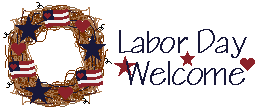
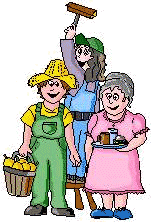


![]()
![]()

![]()



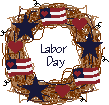
![]()
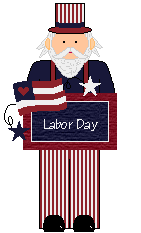
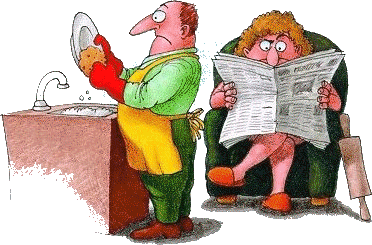
![]()
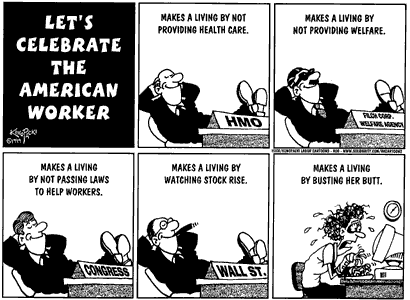
![]()

![]()
![]()
![]()